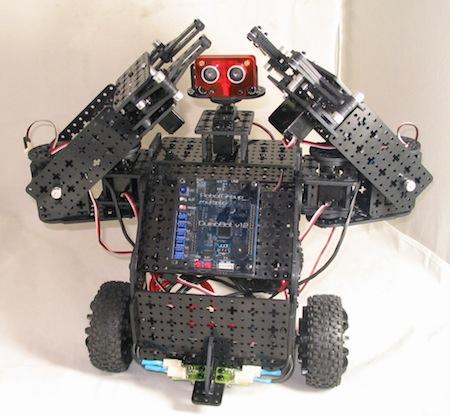Open-Source Kits Put Robots in Many Hands
October 11, 2012

I recently received an interesting press release about Multiplo, a four-person startup seeking venture funds in small amounts to create and manufacture kits for anyone interested in robotics.
The company has used Kickstarter, a Web-based business that helps connect sponsors with small groups that want to pursue a specific project. The Kickstarter approach lets people involved with a project -- which must have a specific goal -- solicit funds and offer "rewards" to people who contribute funds.
The Multiplo project goal involves creating open-source robotics kits people can buy. Anyone interested in the Multiplo kits also can download information and fabricate their own components, rework Multiplo code for their own purposes, modify CAD files to create new components, and so on. I admire that goal. (Multiplo calls its open-source Fab Lab.)

The small group of inventors and robot experts has set 13 levels of funding for participants, starting at $5 and going to $1,950. Rewards include a Multiplo sticker for a pledge of $5, a robot starter kit for a $139 pledge, and an educator's package of 10 robot building kits for a $1,950 pledge. Multiplo requested $15,000 from investors, and as of Monday, reached its goal. You can find more information about the Multiplo project, robot kits, and watch a short video on the Multiplo Kickstarter page.
Multiplo kits come with everything needed to build a robot, although kit builders can add their own components, too. Mechanical parts have plenty of holes for fasteners, so people can easily change the arrangement of motors, servos, and other pieces of a robot. Depending on the kit purchased, builders receive a DuinoBot robot controller that provides circuits for motor drivers, sensor inputs, and connections to Arduino-compatible "shields." The shields, or add-on boards -- available from many companies -- provide additional capabilities such as wireless controls, GPS receivers, displays, and other functions.
People familiar with the Arduino computer boards can continue to use the Arduino integrated development environment (IDE) to write programs in C. Newcomers to robotics and programming can use a graphical program called Minibloq (also a Kickstarter project) to create block-diagram flow charts that then translate into C-language code that compiles and runs on an Arduino, DuinoBot, or Maple computer board. To get off to a quick start, builders can control their robot with a handheld TV remote control via an infrared-signal sensor. Later, robots can operate on their own.
I like the Multiplo approach: kits people can buy, open-source information for do-it-yourself robot enthusiasts, and small contributions from many project sponsors. I wonder if this type of business format will catch on. When the N8 kits become available, I hope to try one.
Related posts:
About the Author(s)
You May Also Like
.jpg?width=300&auto=webp&quality=80&disable=upscale)


